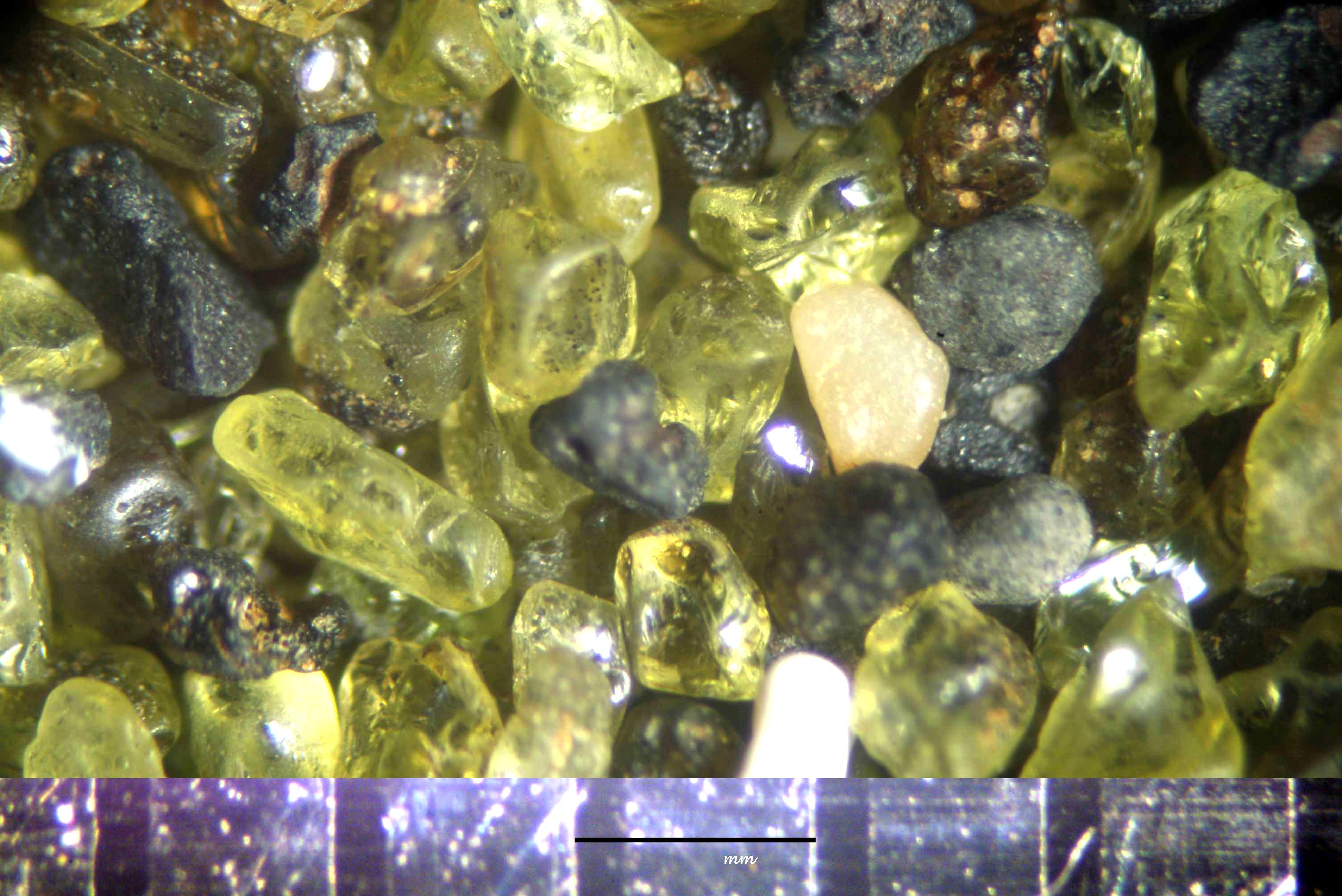Ocean Beach Sand, South Point, Hawaii, Hawaii, USA
This sand sample was from a set of three sands purchased as part of a souvenir from the big island of Hawaii. It is primarily olivine in the chrysolite range (green grains), basalt (black grains), and shell fragments (white grains).
Definition/Function:
This sand appears green because of the olivine grains. Olivine has the general chemical composition of (Mg,Fe)2[SiO4]. It is a very common mineral in igneous rocks and sediments from those rocks. The magnesium end member is the mineral Forsterite and the iron end member is Fayalite. As the amount of iron increases the names chrysolite, hyalosiderite, hortonolite, and ferrohortonolite are used. (Click here for more images of Ocean Sands) (Click here for more images of Sand in general)Significance in the Environment:
Characteristic Features:
Olivines belong to the orthorhombic crystal system and may be optically positive or negative, the iron rich members being optically negative. The refractive indices range from 1.635-1.827 for alpha, 1.651-1.869 for beta, and 1.670-1.879 for gamma. Its birefringence ranges from 0.035 to 0.052. The density of hornblendes range from about 3.22 to 4.39 grams/cc. The 2V ranges from 82 to 134 degrees. Small grains tend to be colorless to green or yellow. Hornblende is pleochroic with alpha and gamma:pale yellow and beta:orange- yellow to riddish brown, depending on iron content.


